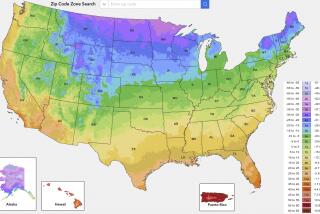Up a Tree on Foliage Forecasts
- Share via
Predicting fall foliage weeks ahead is well-nigh impossible. But this year’s East Coast drought already has tongues wagging worriedly about New England’s upcoming leaf-peeping season, with millions of tourist dollars hanging in the balance.
Some trees have turned brown or dropped leaves, and it’s not even fall yet--a bad sign, observers agree. But whether it’s cause for panic depends on who’s talking: tourism officials or botanists.
The week before Connecticut was declared a federal drought disaster area earlier this month, for instance, the state’s Office of Tourism issued a release saying there has been “just enough rain to ensure beautiful foliage.” But at the Connecticut College Arboretum in New London, director Glenn D. Dryer last week fretted that without some sustained rain soon, “obviously, there won’t be much in the way of fall color.”
Local trees, Dryer explains, were already stressed by droughts in 1995 and 1997. Especially vulnerable are birches, which often grow in shallow soil, and higher-elevation oaks. Damage to sugar maples, which grow mid-slope and can produce vibrant oranges and golds, would depend on location and soil conditions, he added. Still, he said, he’s “hopeful” there will be “decent foliage” if recent rains keep up. And he expects more northerly states such as New Hampshire and Vermont, which get more rain, to be less affected.
What all this means for visitors is that, rain or not, fall colors will likely be more localized this year--good in some spots, not so good a short distance away. New this year, Connecticut plans to advise tourists on specific routes that are good for viewing and update foliage information every three days instead of weekly, starting in early September, a spokeswoman said.
More to Read
Sign up for The Wild
We’ll help you find the best places to hike, bike and run, as well as the perfect silent spots for meditation and yoga.
You may occasionally receive promotional content from the Los Angeles Times.






